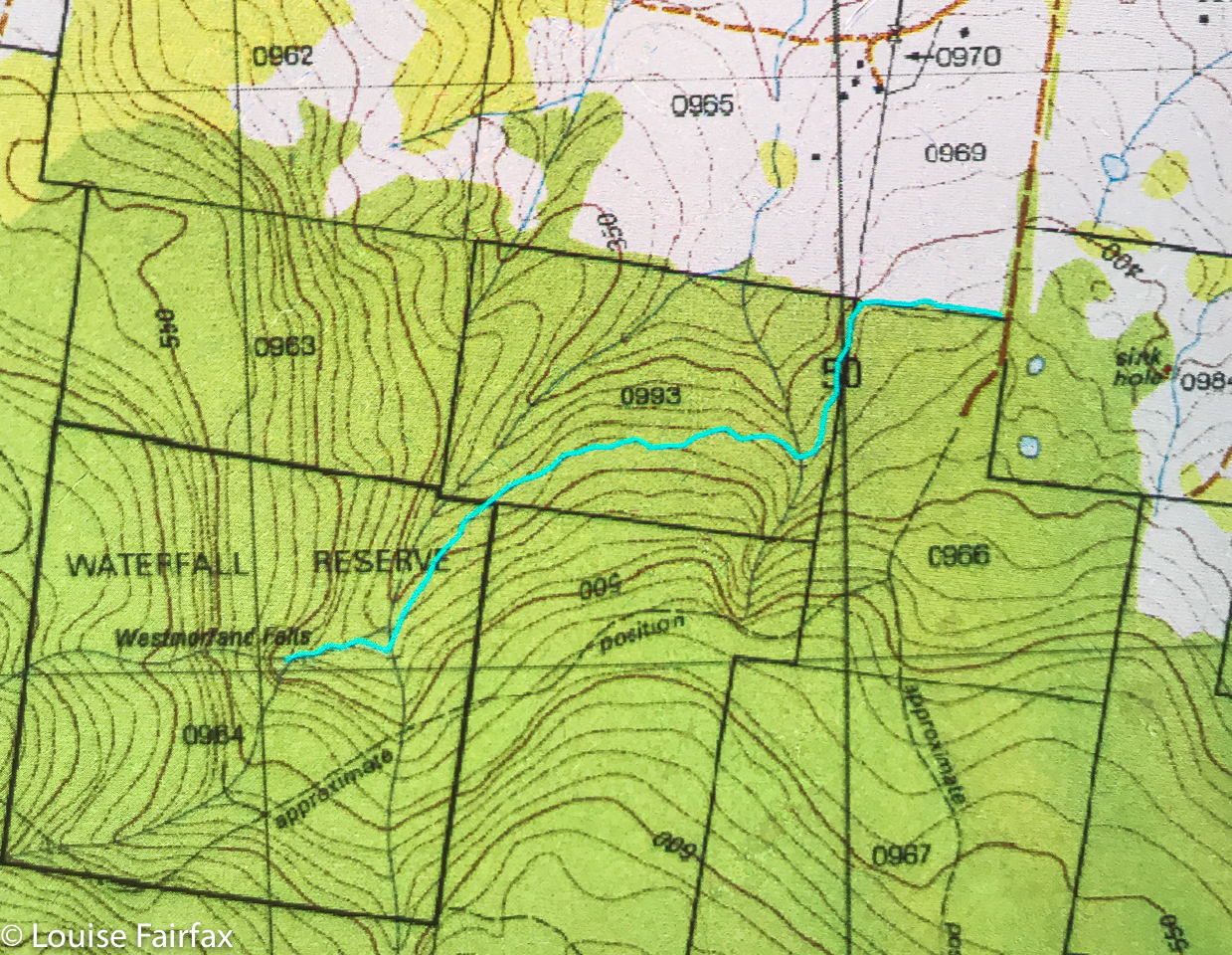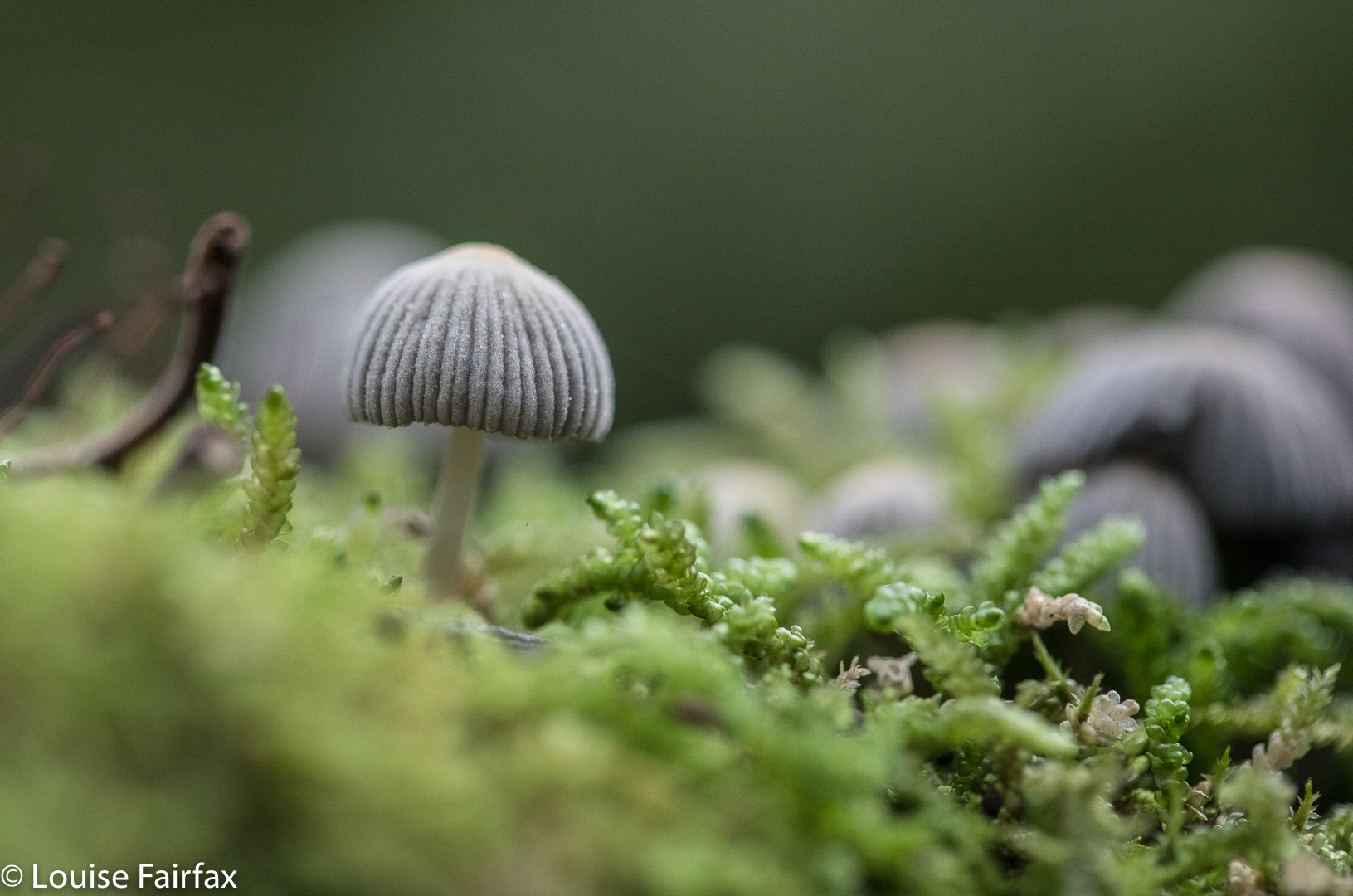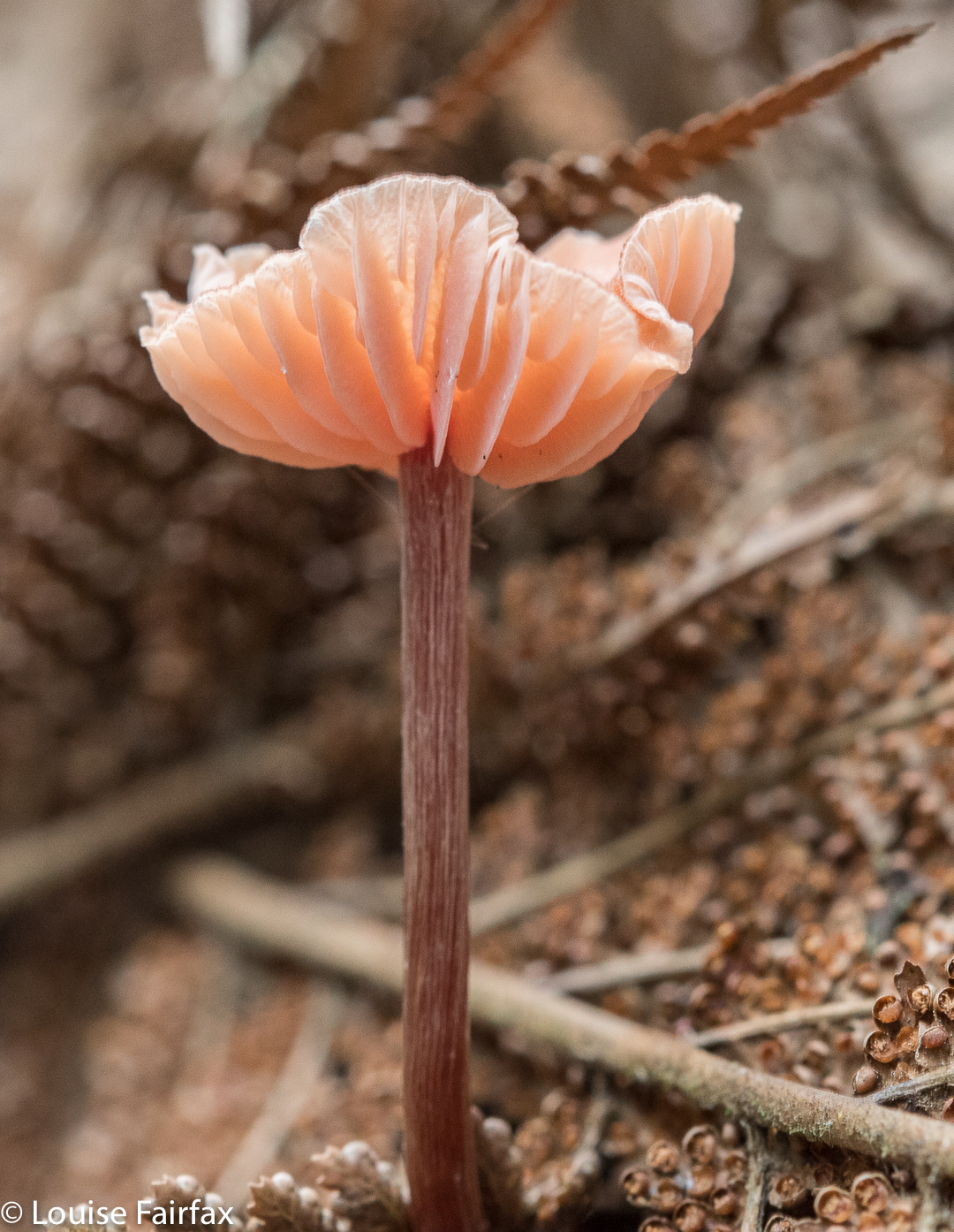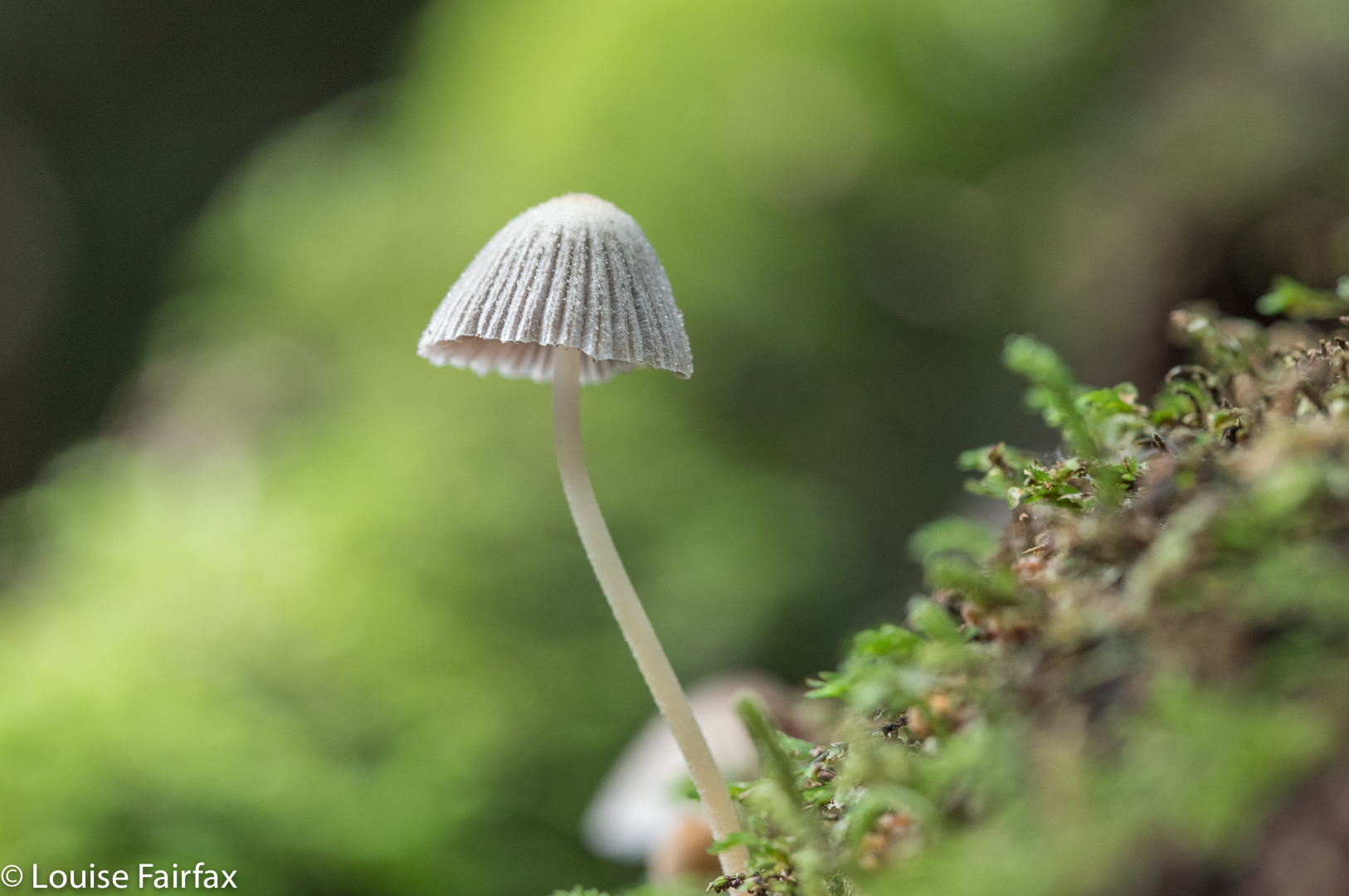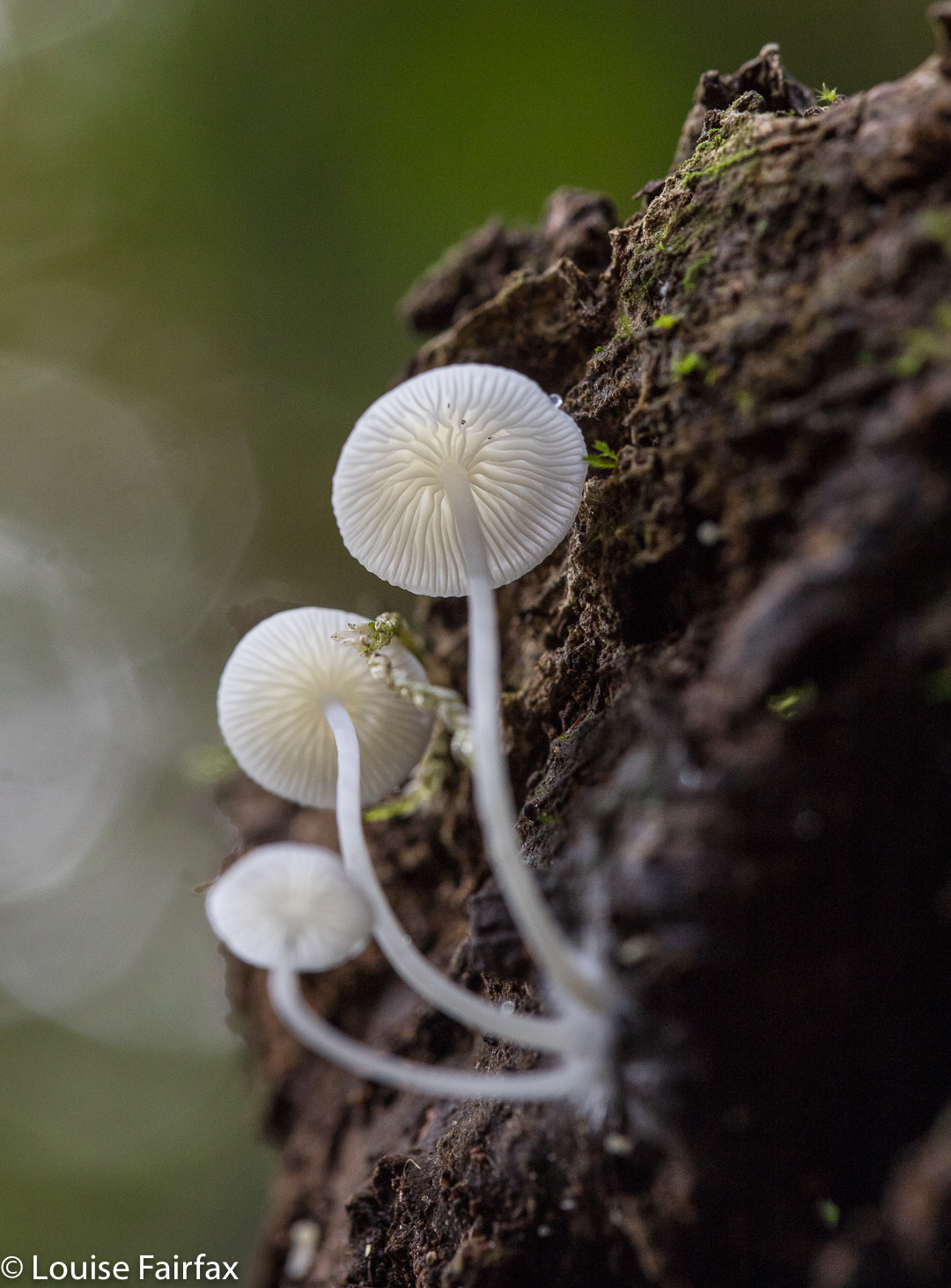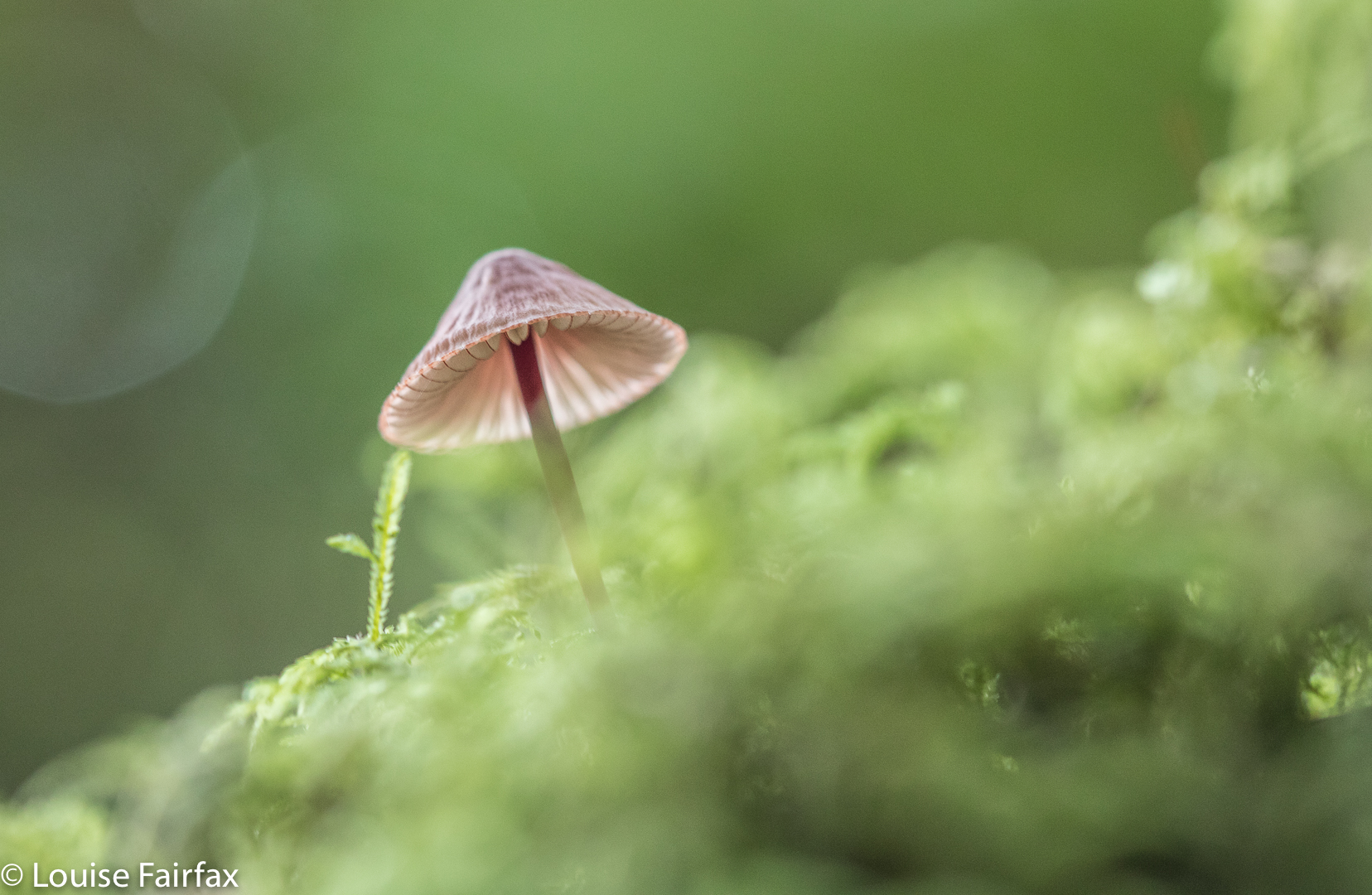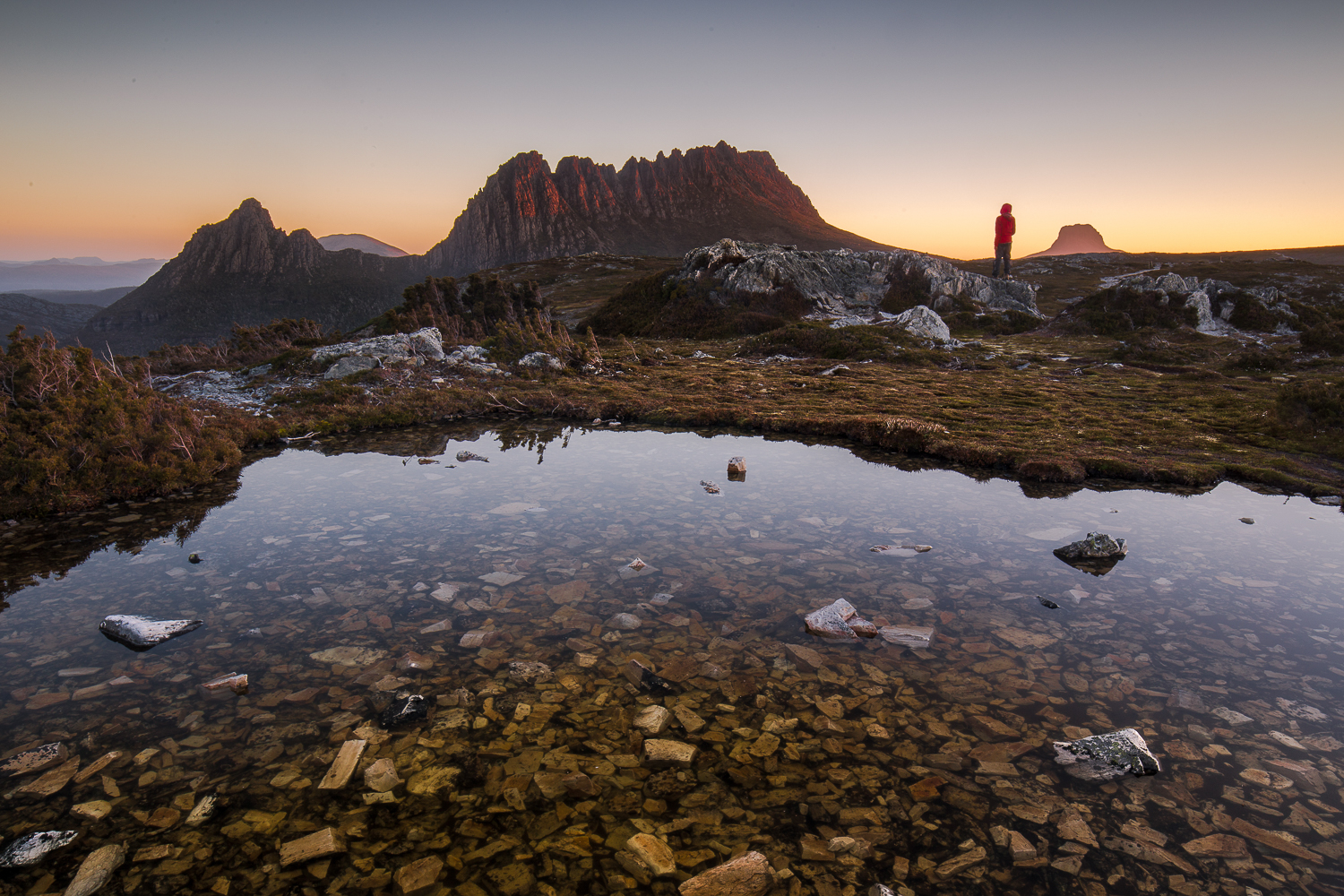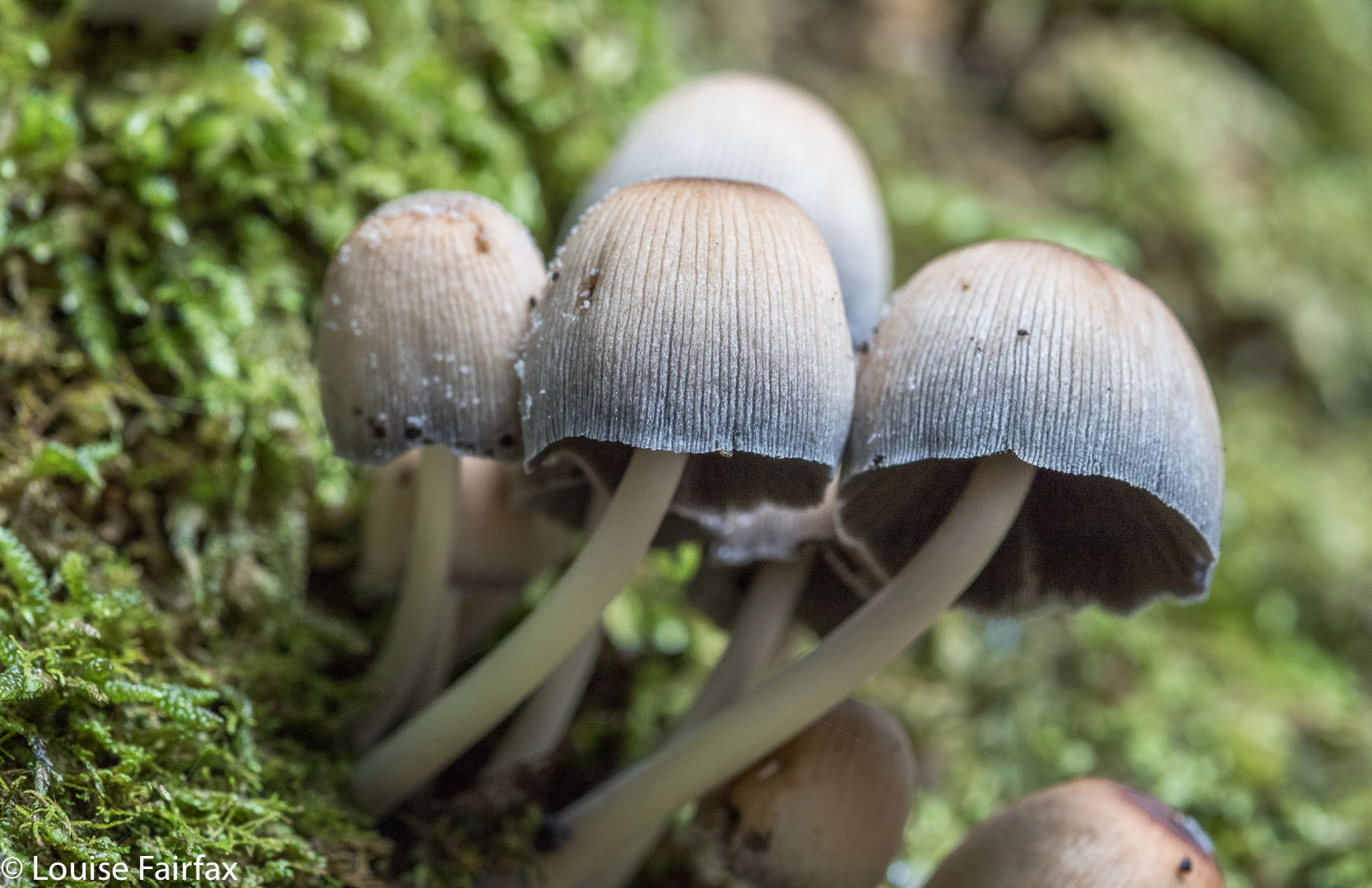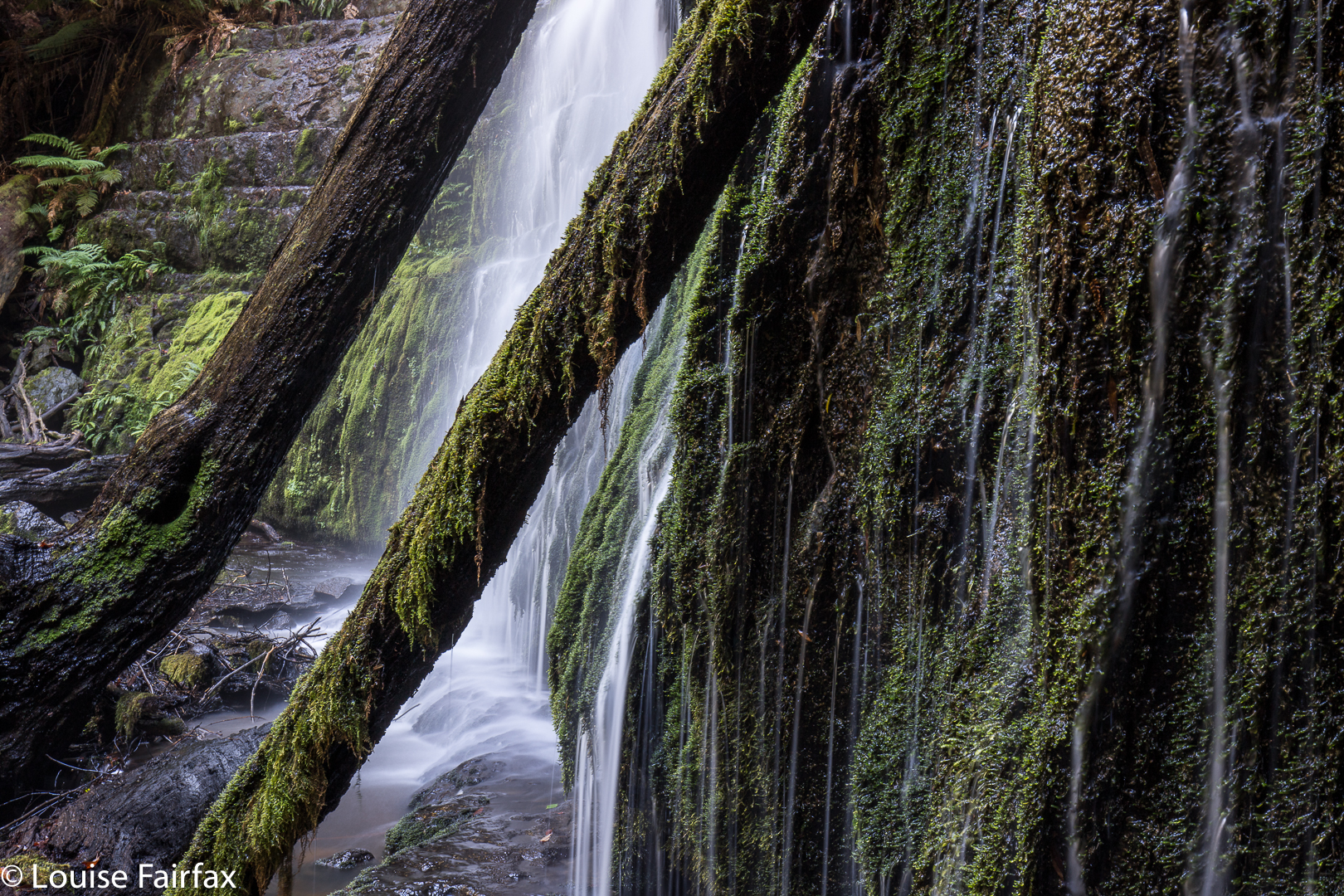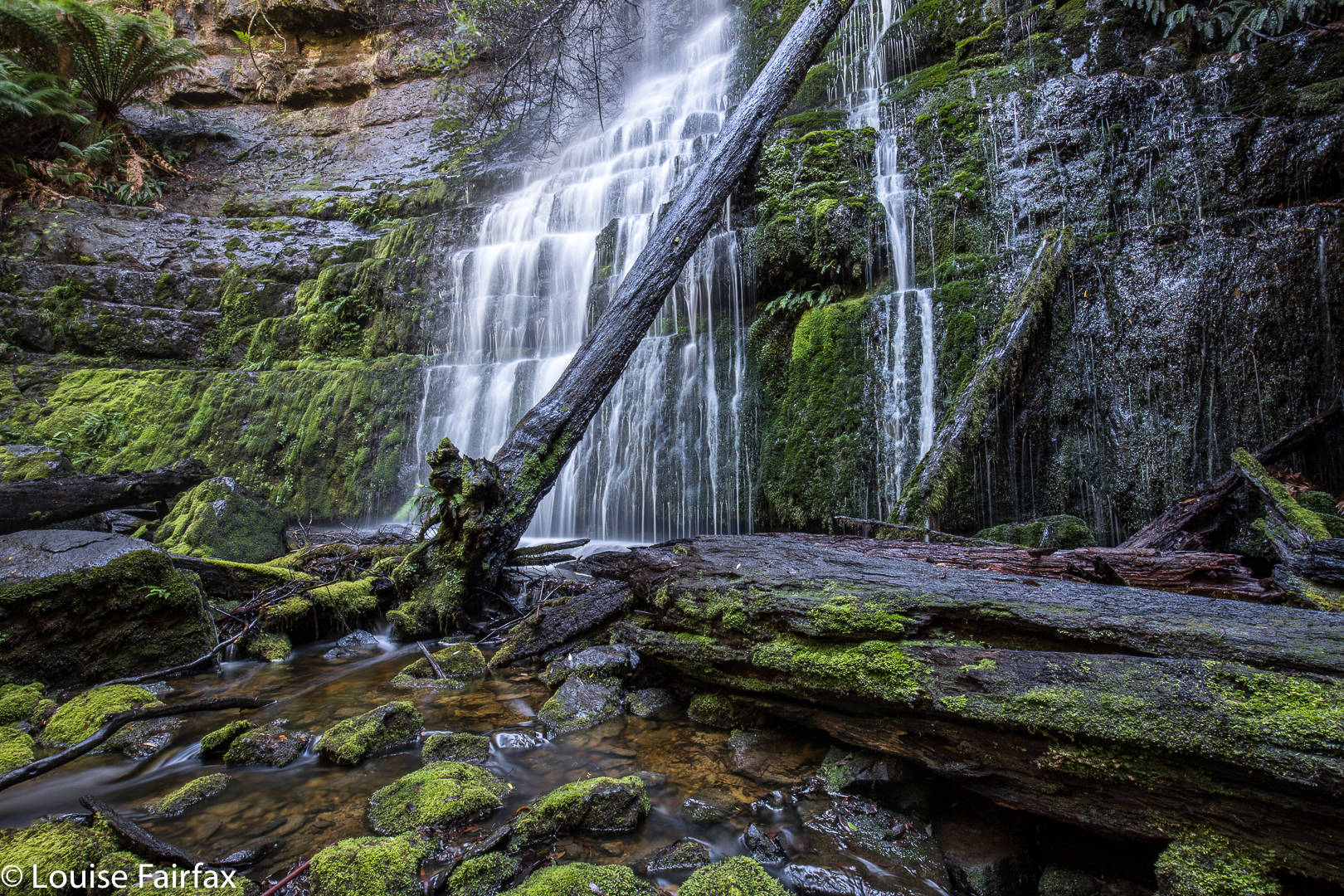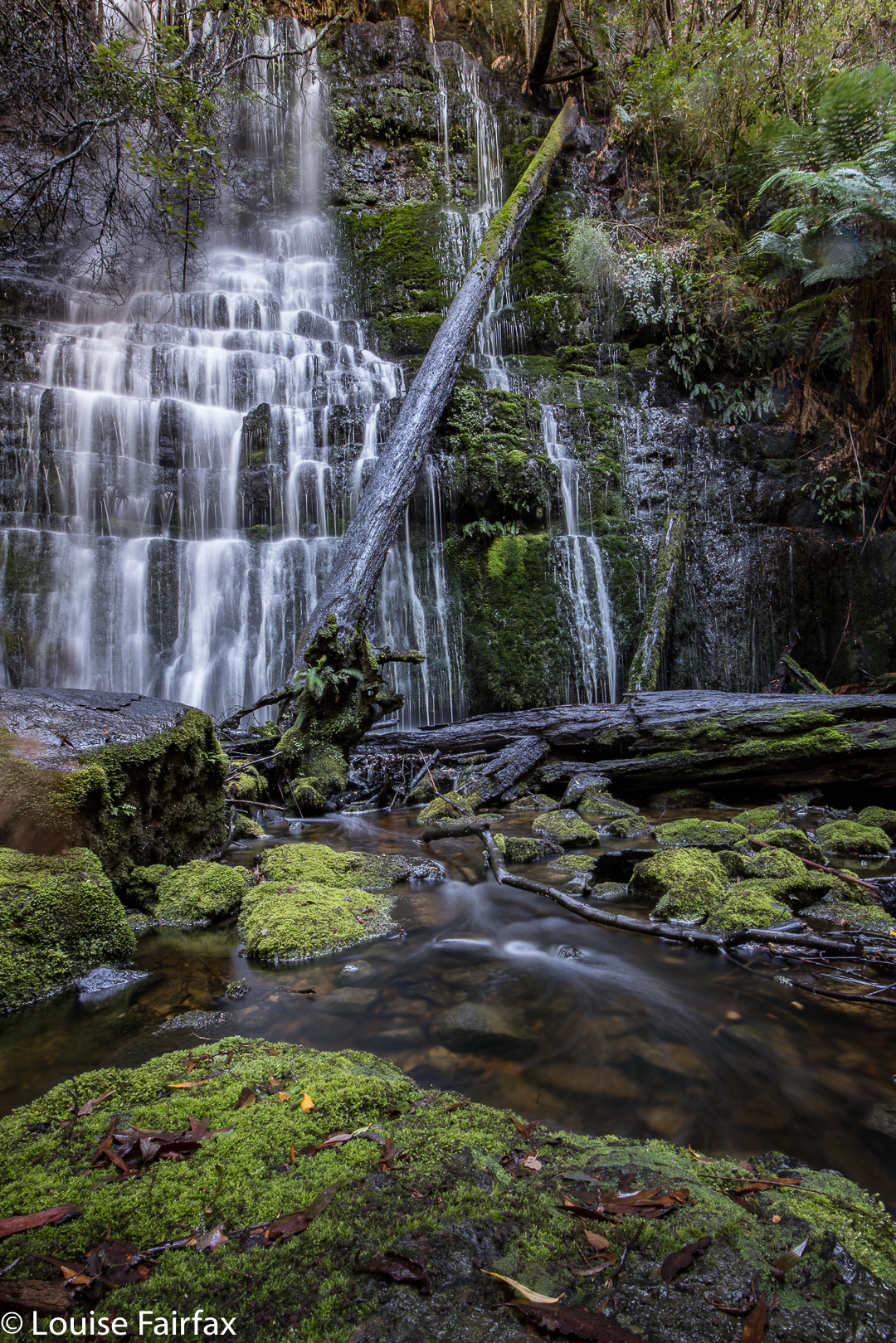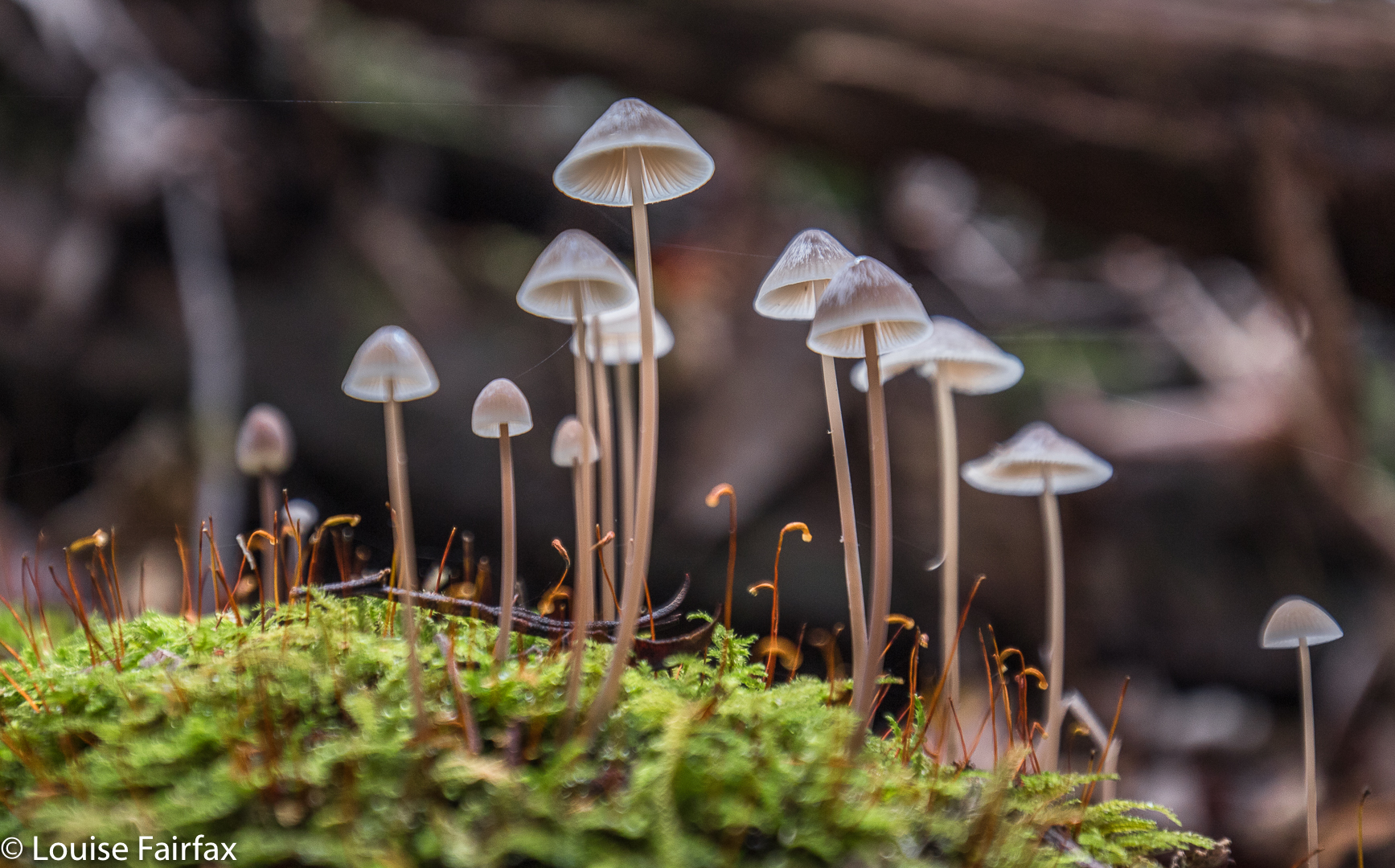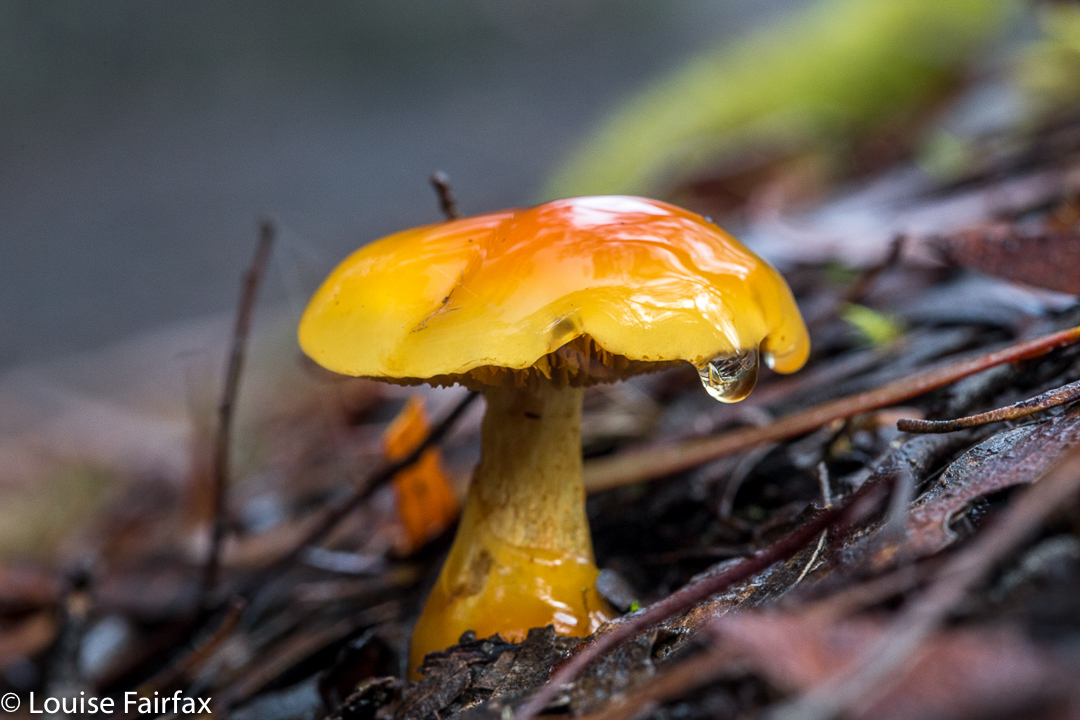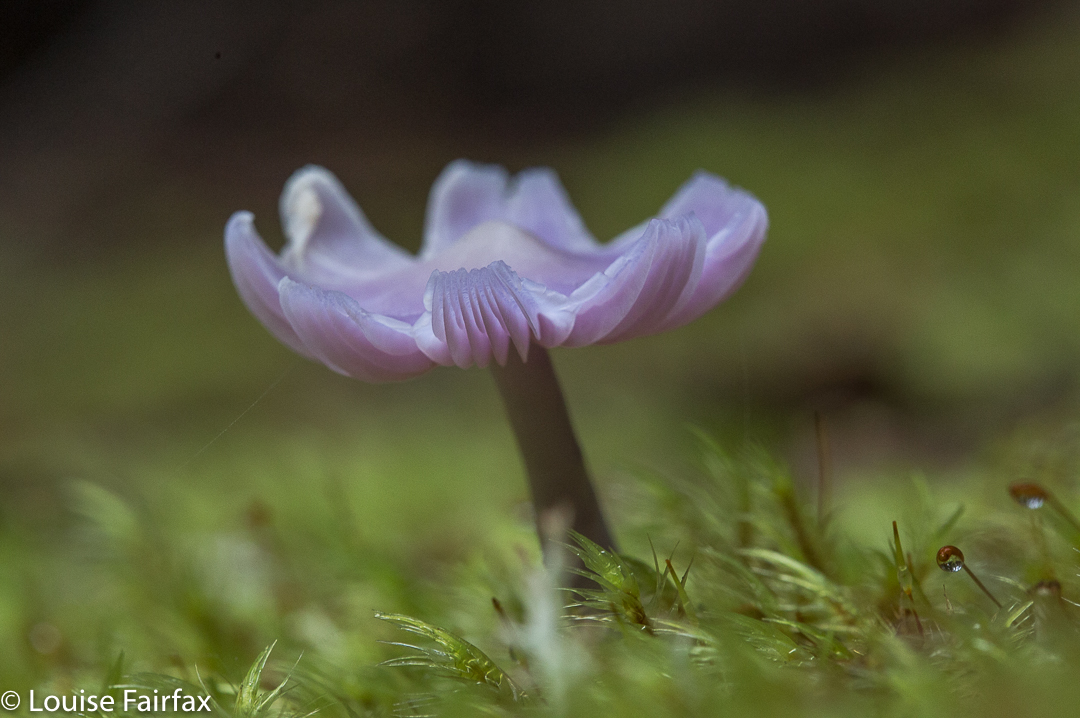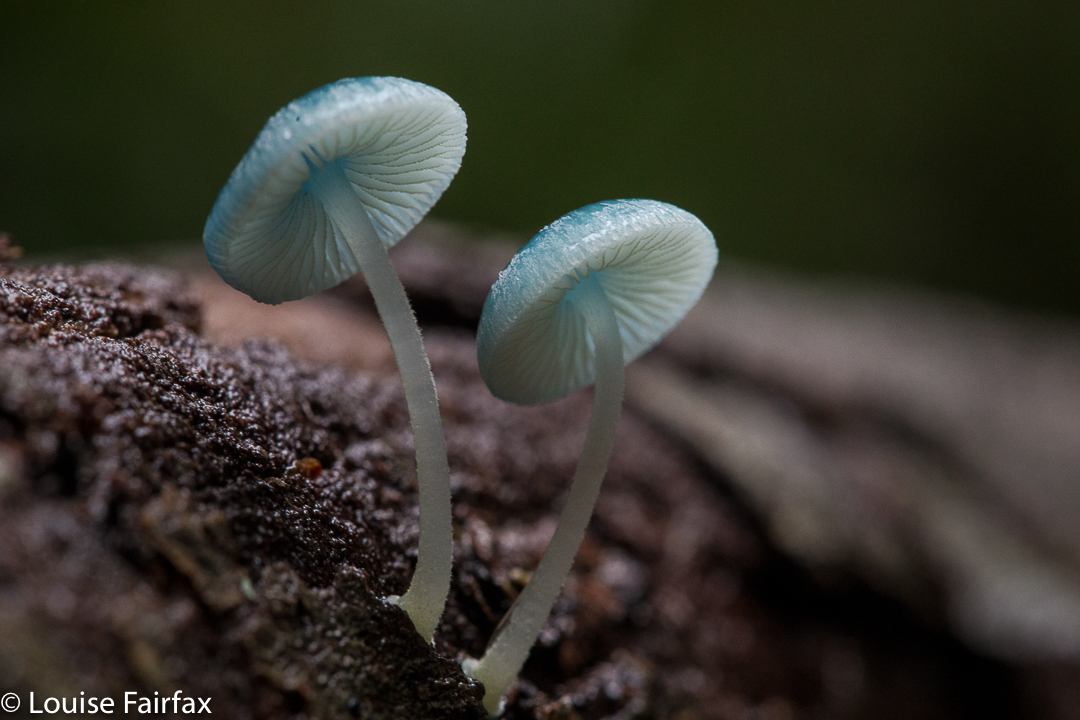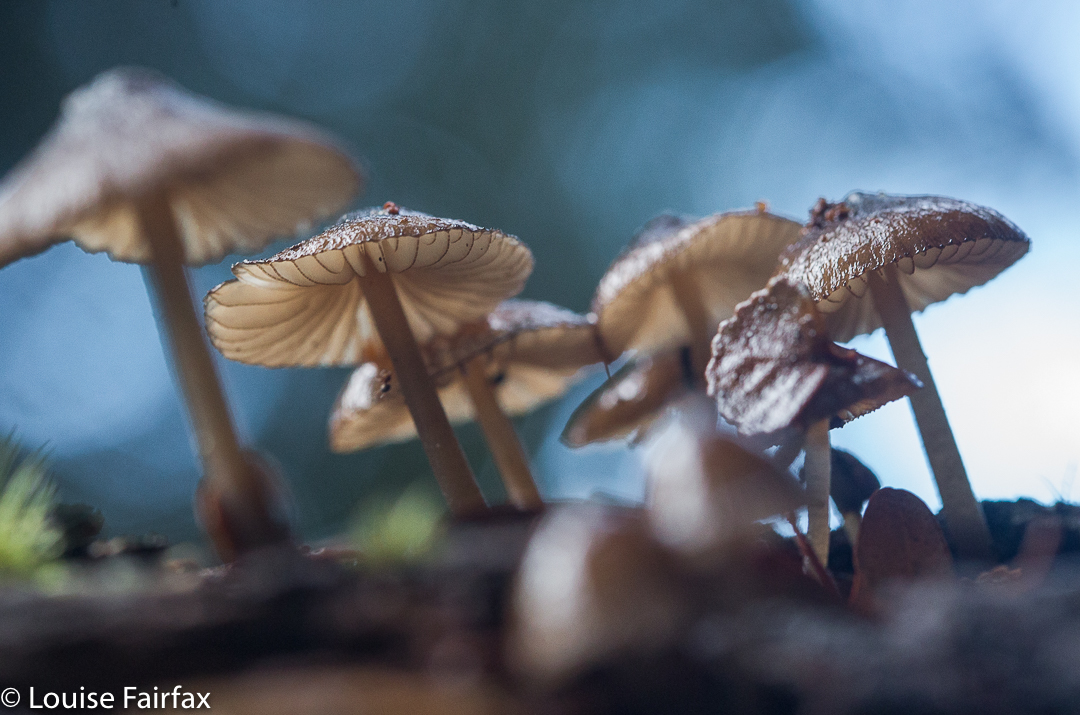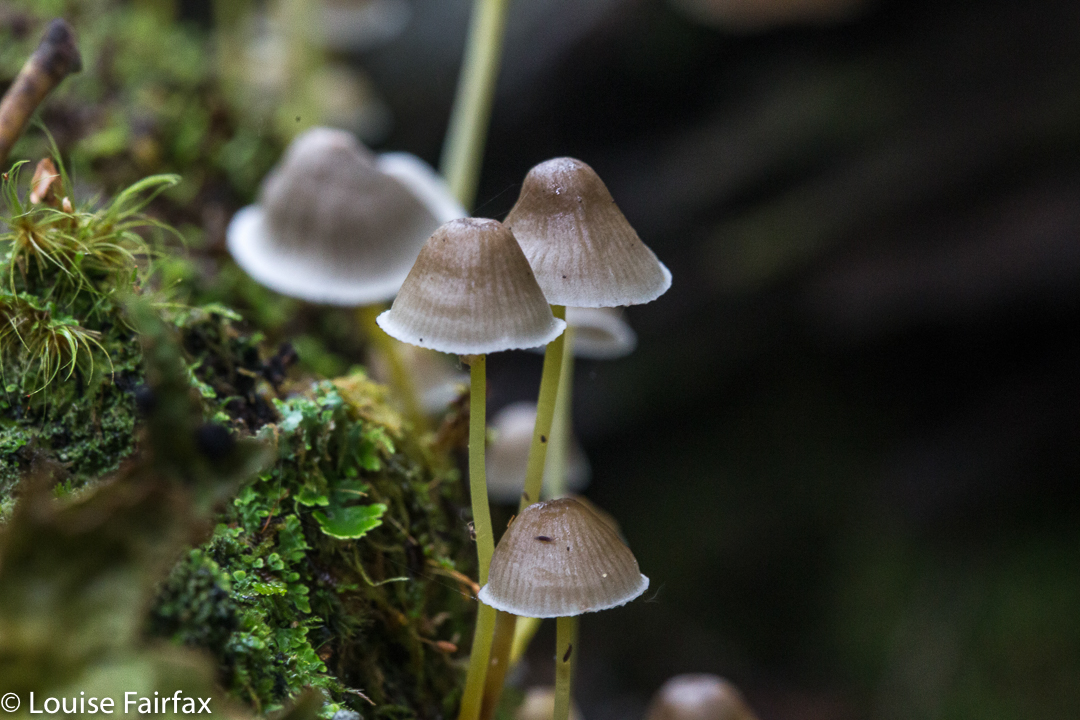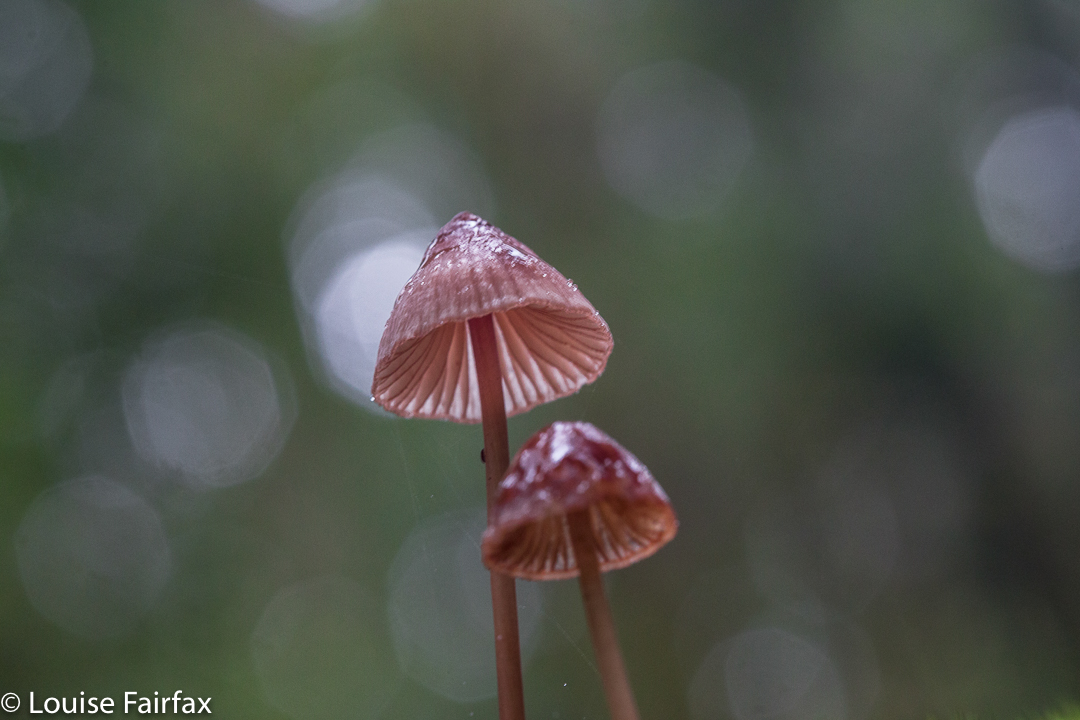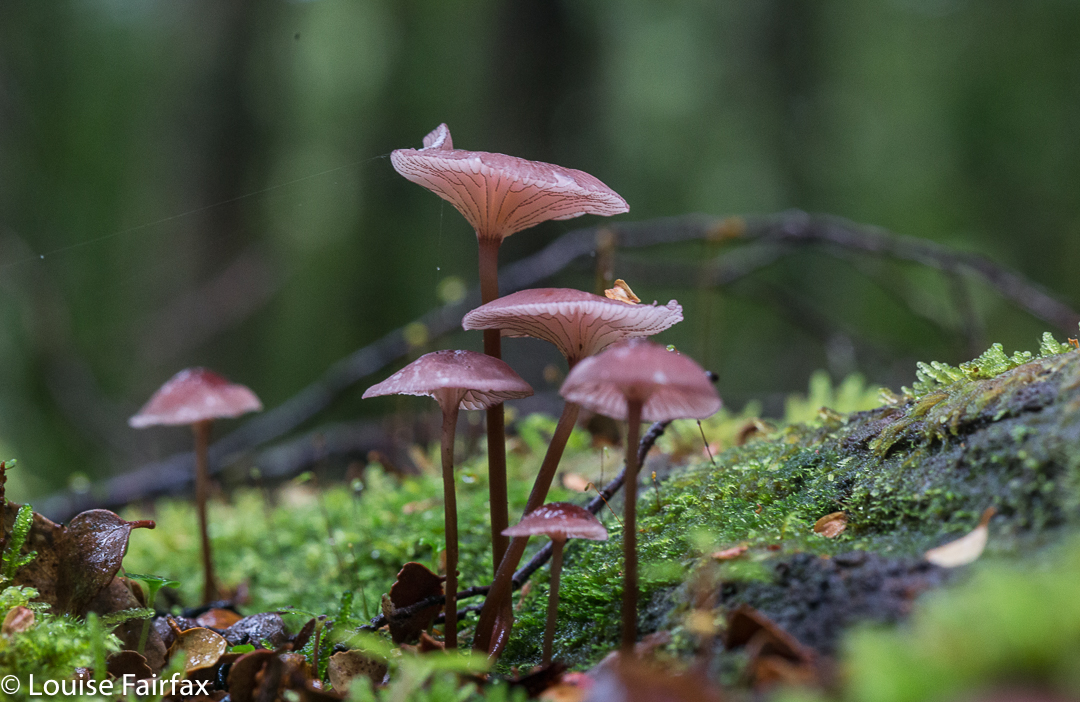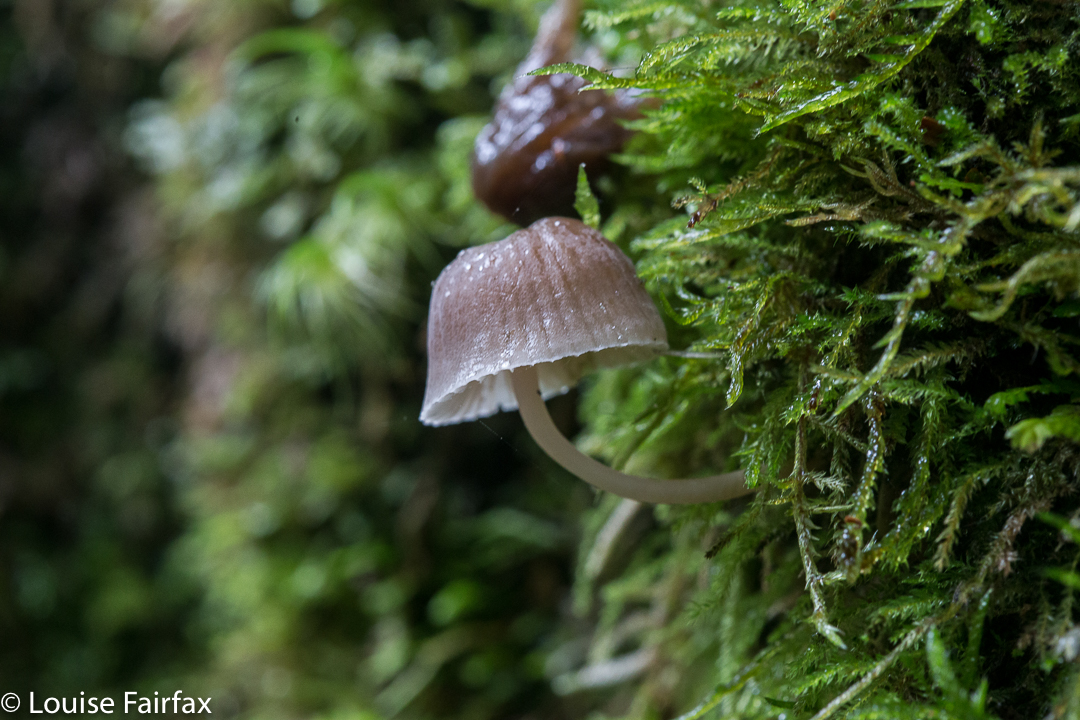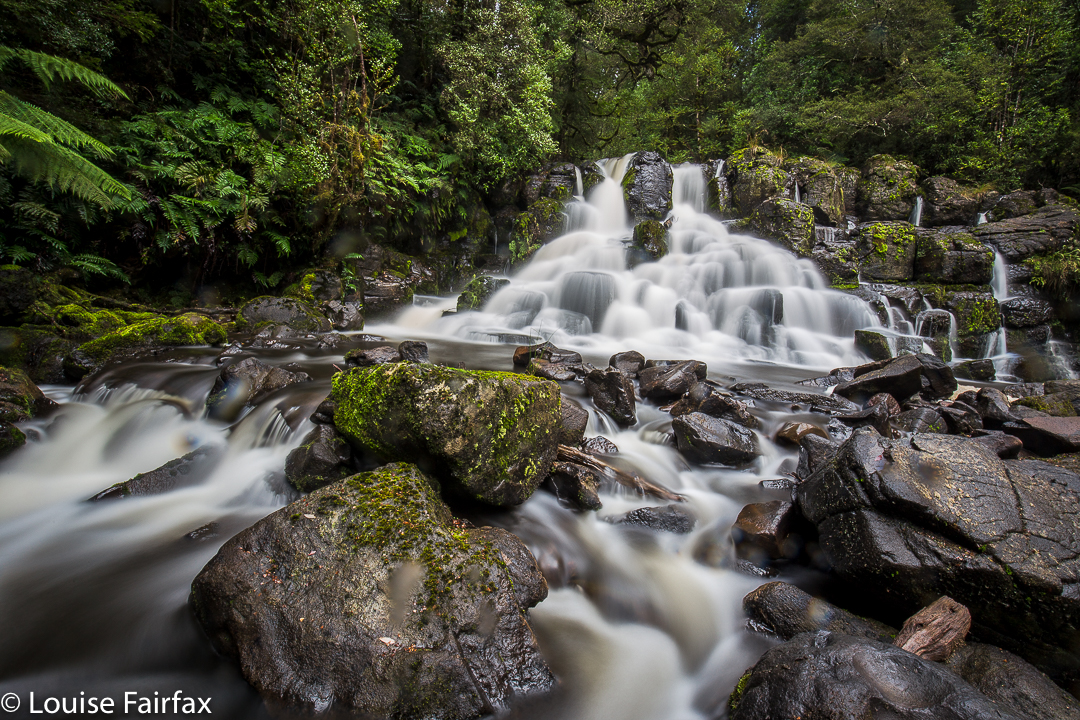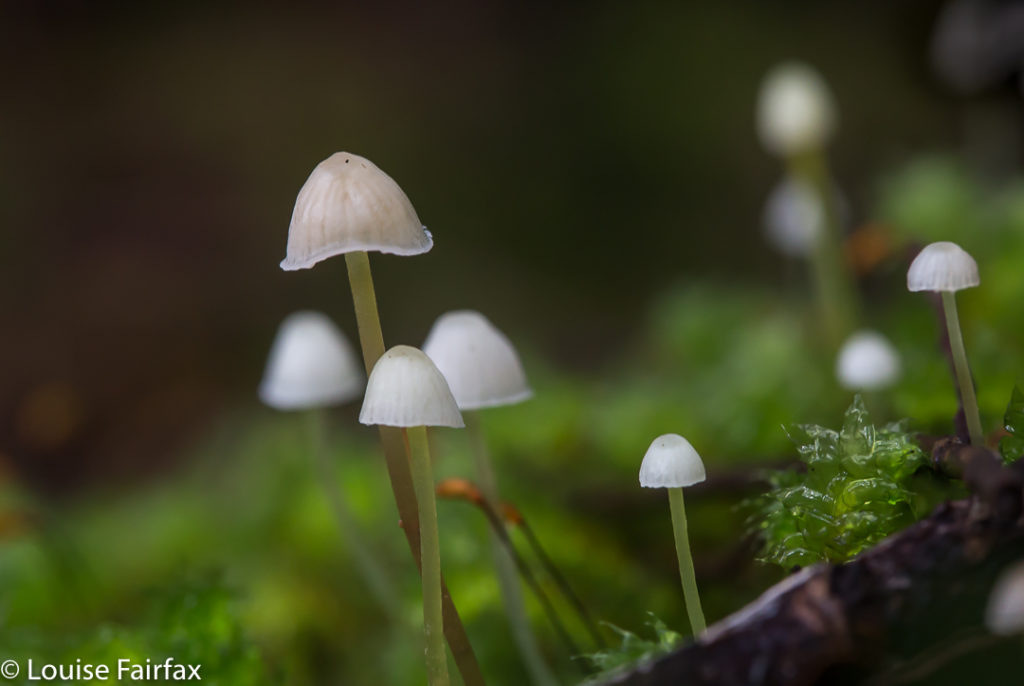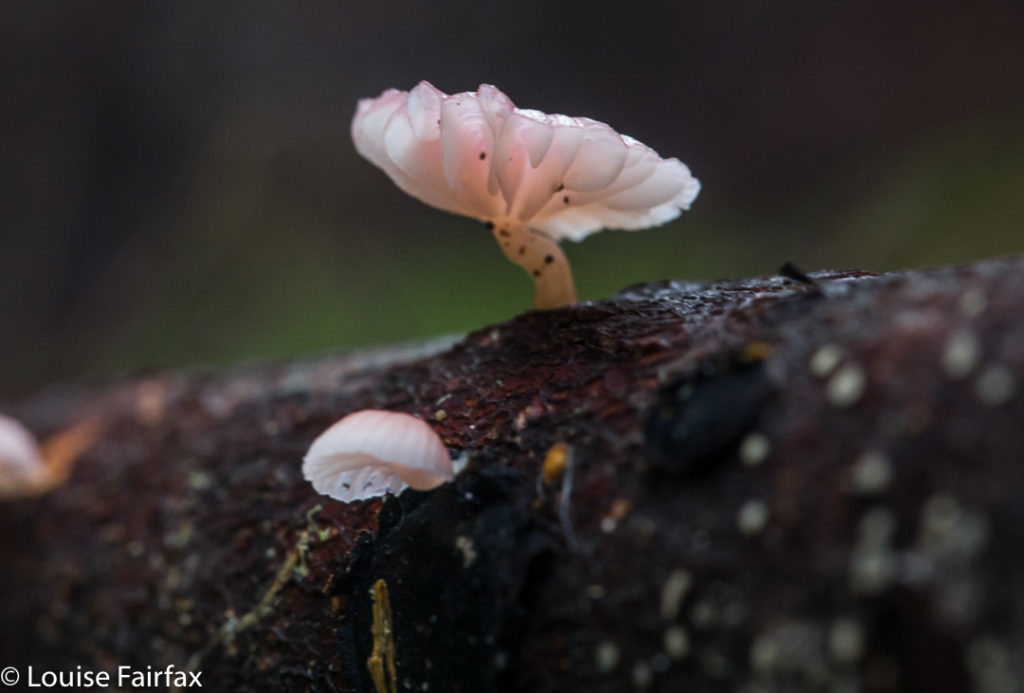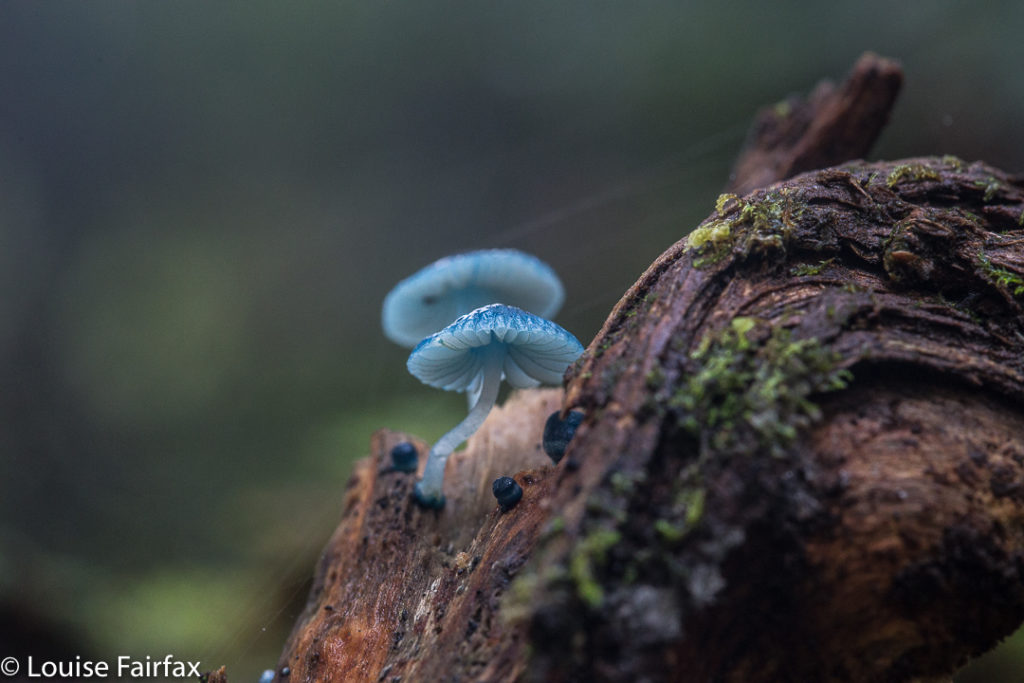Westmorland Falls 7 May 2017.
It has been several years since I last visited Westmorland Falls, and I have wanted to return to take better photos. But then we had the big flood and the track was closed. At last this weekend I had my chance to return.
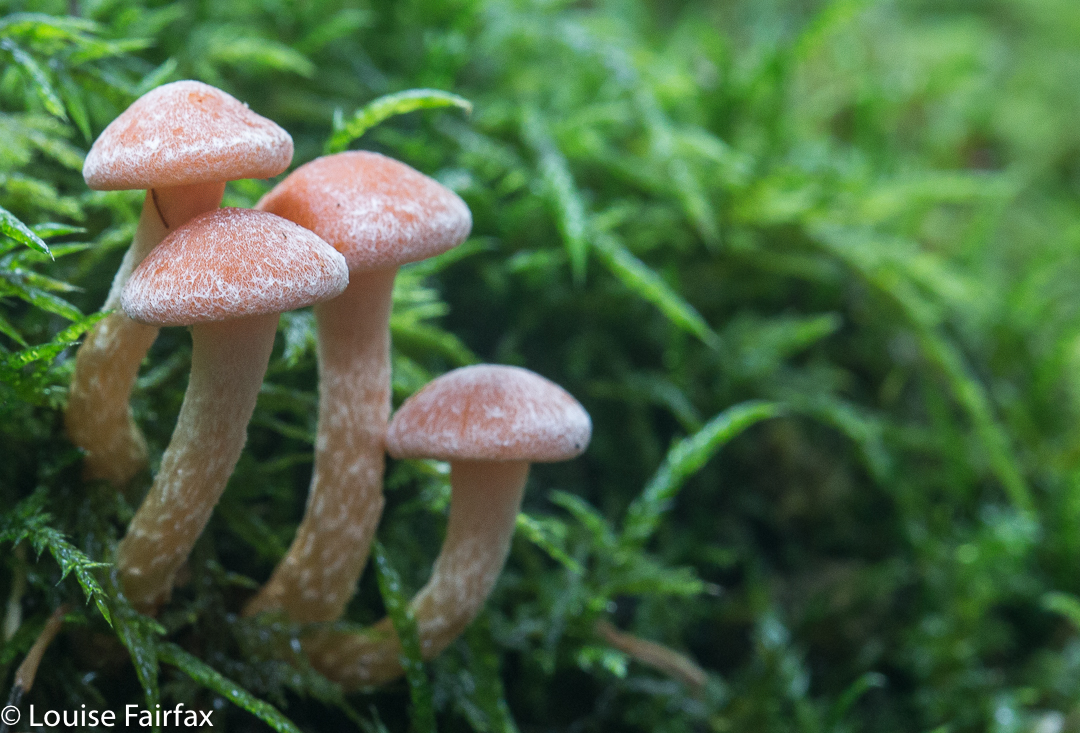
We drove along happily, delighting in the autumn scenery of rural landscape dotted with red and orange and yellow trees, and of the fresh snow on the Western Tiers. It had been nice and warm at home with our fire in the kitchen, so, in the comfort of the car, we did not translate that delectable white into the inevitable chill in the air that wind passing over it can bring. Brrr. We very quickly did our maths when alighting from the car.
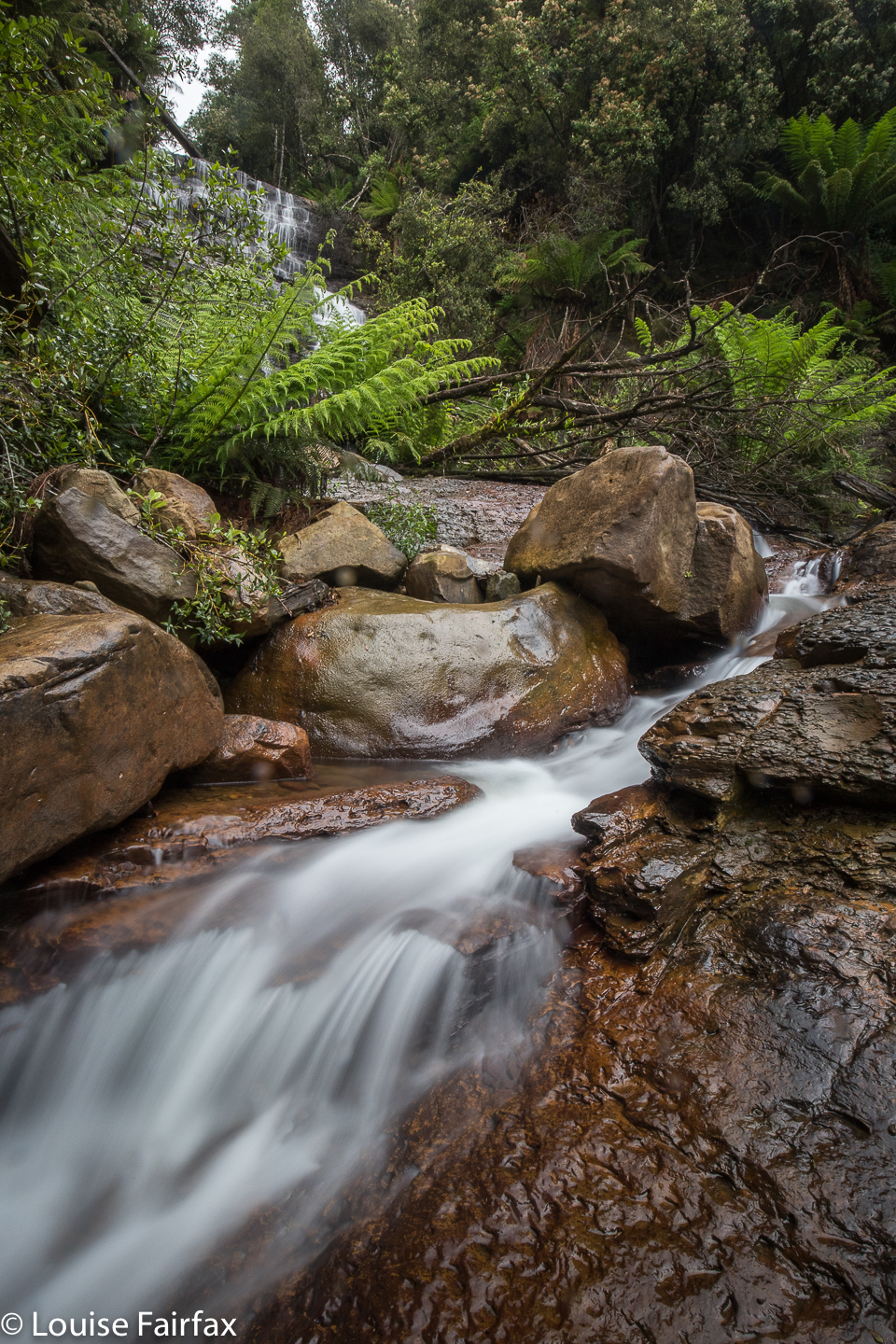
Westmorland Falls; picture from Dec 2018 when the flow was better
Luckily, my happy memories of Westmorland extend to glowing images of all the fungi we found on the previous visit. These did not disappoint. The falls, however, were another matter. The devastation of that area is still all too visible, and the falls themselves seemed shockingly barren, stripped of the framing ferns. Fallen trees were all too abundant at the base. But at least they have been opened back up and heaps of repair of repair has been done – even if they have left, seemingly forever, two gigantic, unsightly and utterly unphotogenic bags at the base of the whopping viewing platform that has been built.
Repair was a smart move. We met about ten other people who were there to see the falls, including Japanese tourists. I hope all of them supported the local shops by buying food in Mole Creek or Chudleigh. If you want money from tourists, you have to give them something to do to keep them in your area – and something to spend their money on. By repairing flood damage so that tourists (and Taswegians) can reach attractions like waterfalls, you are hopefully supporting the local businesses.
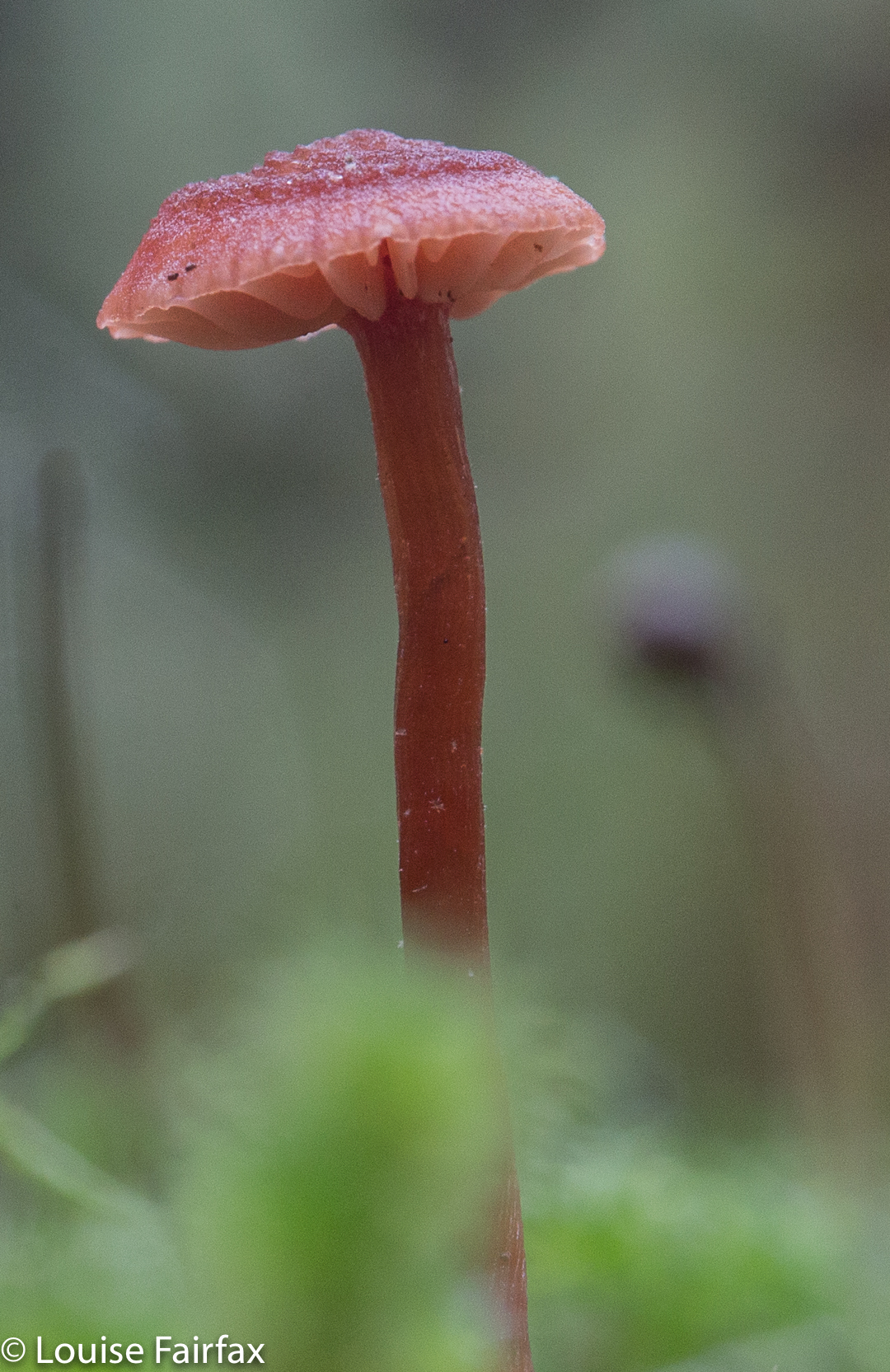
The sign said two hours return. How do they know how long you want to spend photographing, or whether you want to have lunch there or not? I hope it is more helpful to tell you that I took 26 minutes in each direction, and maybe an hour photographing on top of that. As it was pelting with rain, I ate in the car after I’d finished. In 2017, I took nearly three hours, spending all the extra time lying in mud trying to fit under delicate mycena. Luckily the leeches weren’t out, or I would have been covered in them. (2018, Dec, they made up for it. I flicked off leeches the whole trip home. It made driving a challenge).
In 2018, I chose these falls on a day when it was due to rain all day. They were perfect for that, involving not too long a walk, and on a track that doesn’t have too many overhanging shrubs to drench you as you go past.
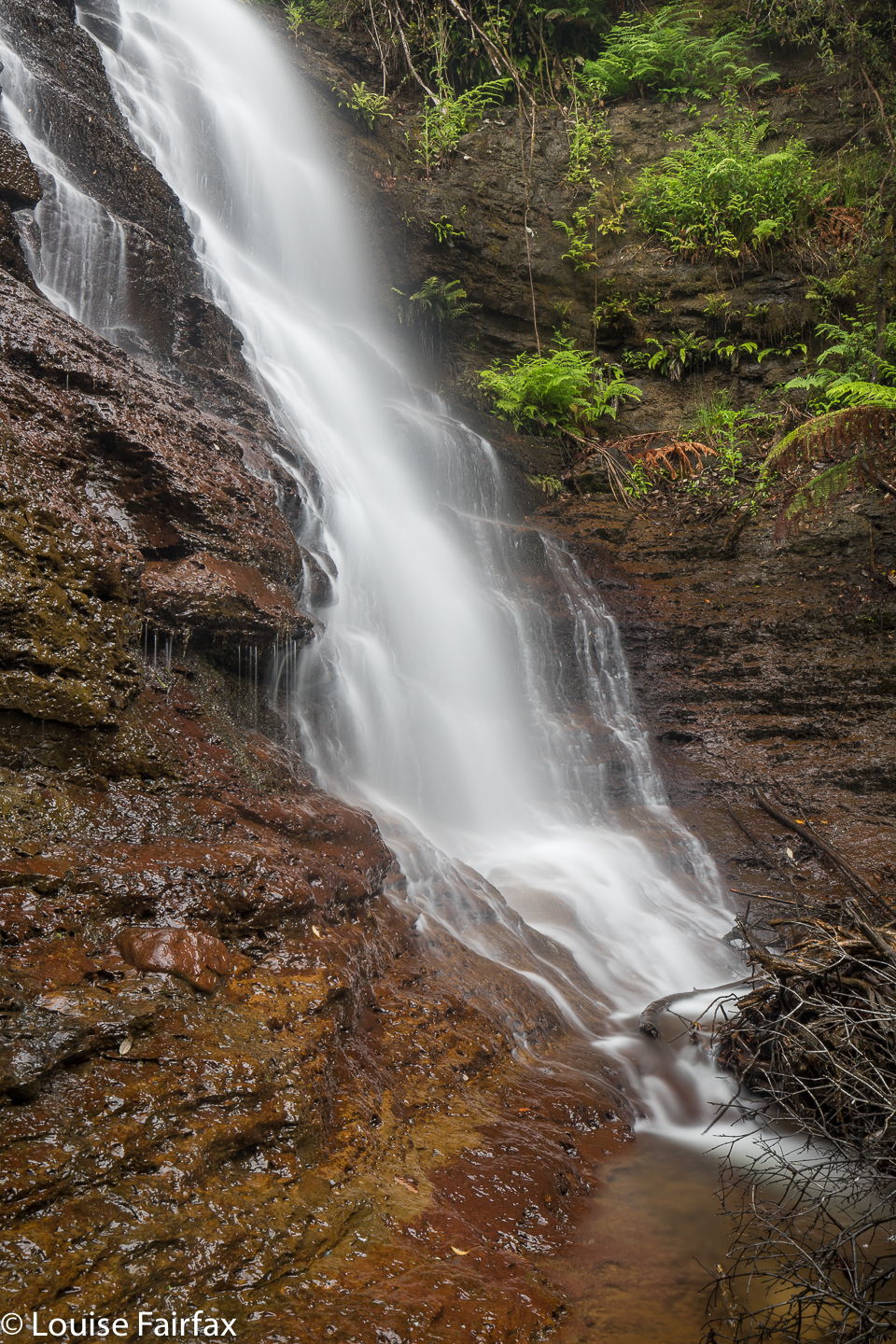
To reach the falls, head south from Mole Creek along Caveside Road for 5.9 kms. Turn right at a road signed Wet Cave Road, which the lady on google maps will tell you incorrectly is West Caveside Road. At the T-intersection of this point, there is your first sign to the falls you are wanting (spelled incorrectly). From here on, every turn has a sign. The sign that says you’ve arrived is spelled as per the map. (2018, I came straight in from Chudleigh instead of going via Mole Creek. Bad idea. The signs to Caveside dump you, abandoning you in the middle of beautiful countryside. It’s much clearer if you come via the Mole.)
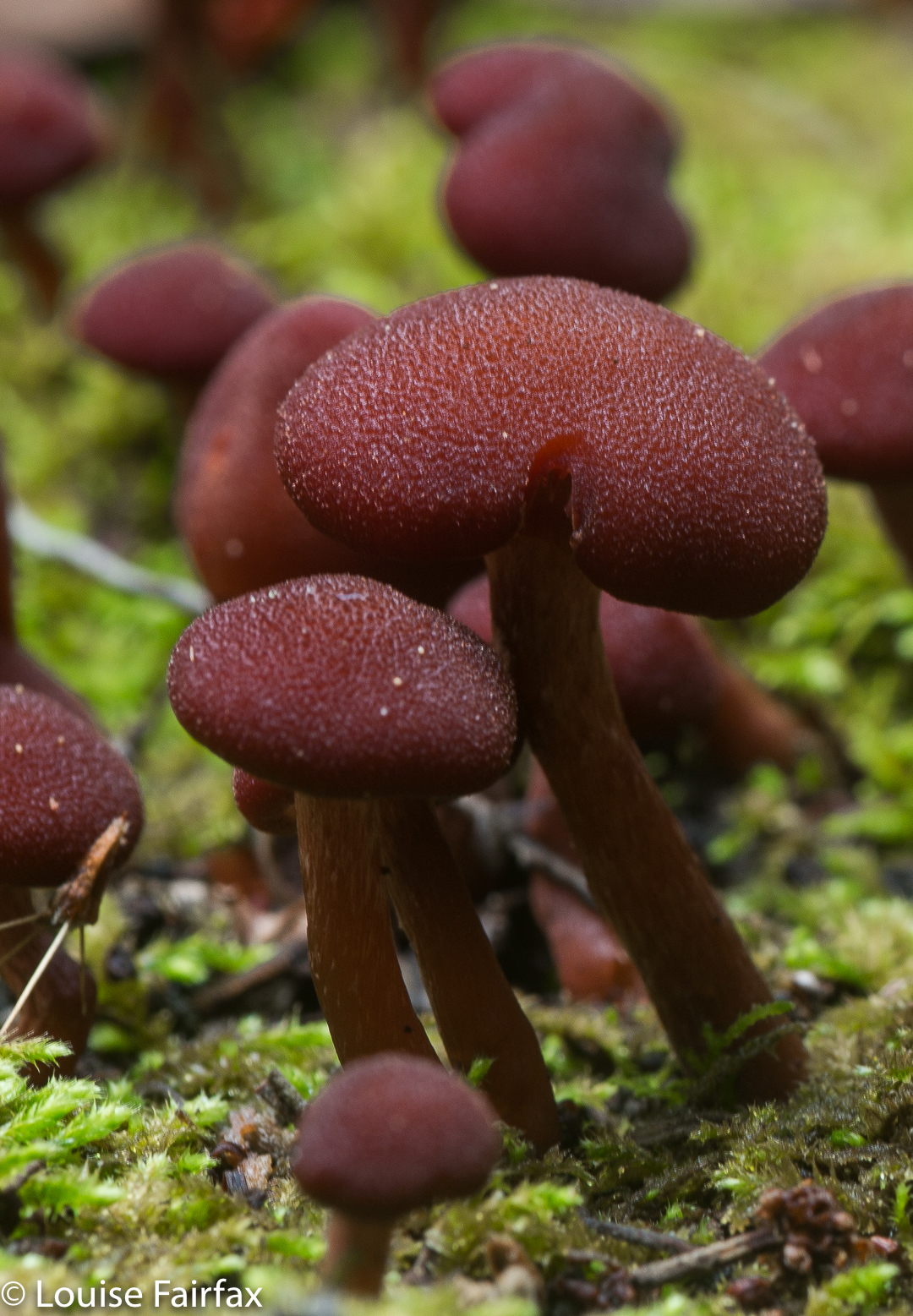
As hinted above, there seems to be a great deal of confusion about the spelling of these waterfalls. I am using the spelling that is on both the 1:100,000 and the 1:25,000 maps. They get the call. Surely they are careful enough to spell the beastie properly. Not so the Meander council, which has some road signs directing you with the spelling having and e (as in Westmoreland Falls) and some without, as I have used consistently here, in line with the maps. I note that Waterfalls of Tasmania uses the other spelling. Google is rightly confused, and lumps all references in together – very wise. Official government map departments use the correct Westmorland spelling, but I note that the Touring Tasmania site uses the incorrect spelling. Mole Creek information uses it correctly. Whatever spelling you use, Google maps will tell you it doesn’t exist, and will try to direct you to some place in America, no doubt selling stuff that will last a short time. The falls are not what they used to be, but they are still worth seeing, and the fungi on the way are terrific.
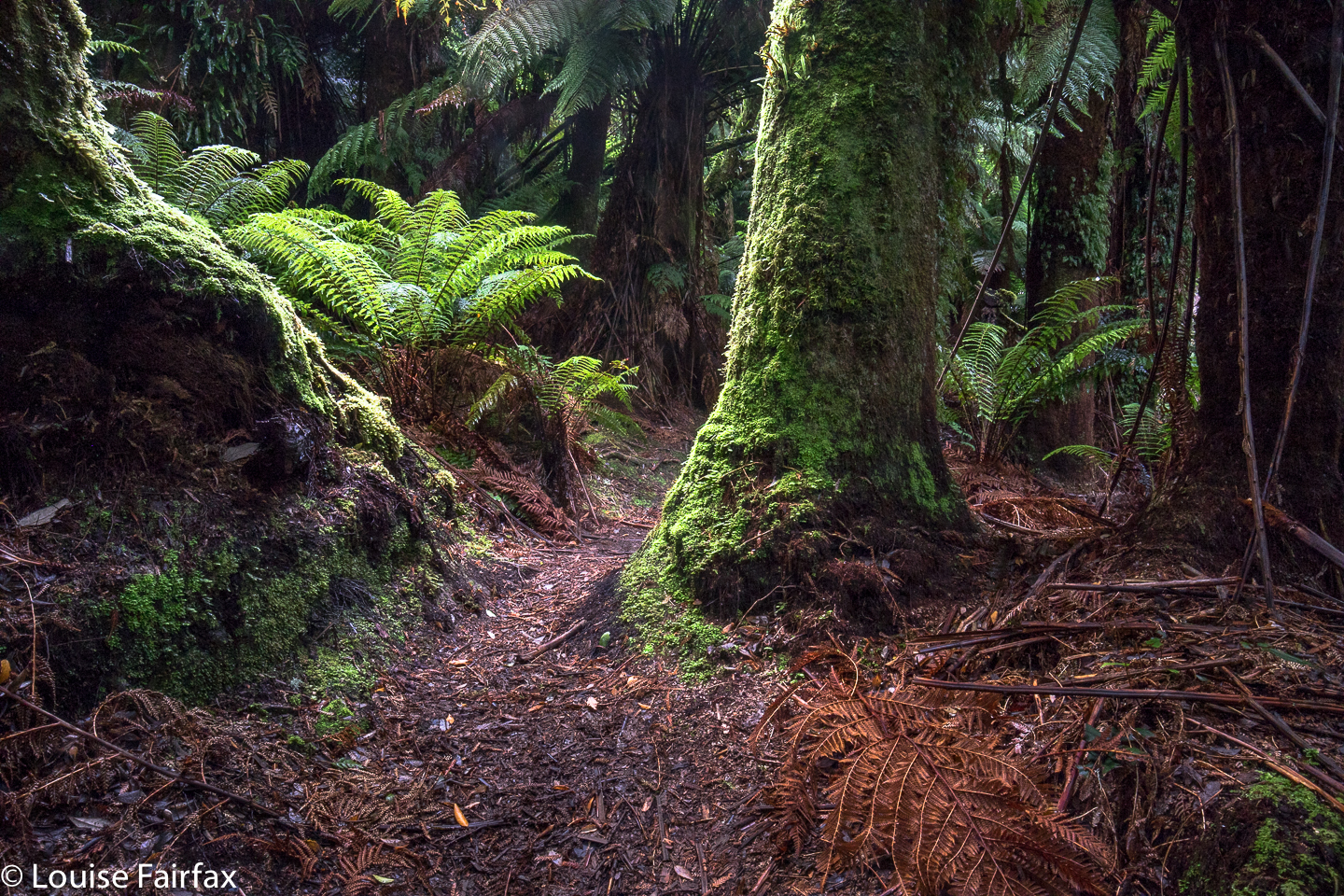
Westmorland Falls Fairy Forest.
Route data: 1.75 kms in each direction, with over a hundred metres climb (and some climb on the return journey as well):
